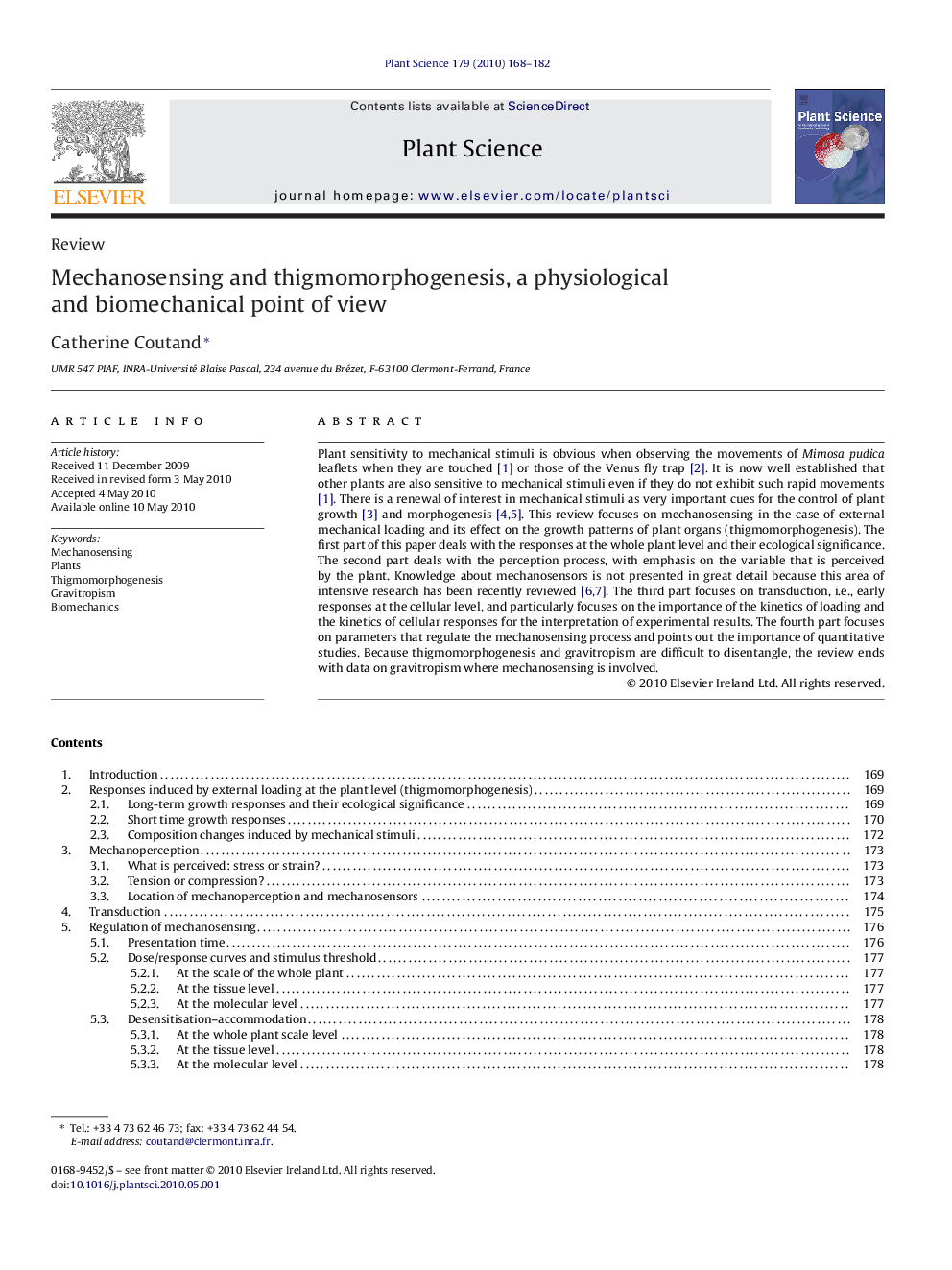| کد مقاله | کد نشریه | سال انتشار | مقاله انگلیسی | نسخه تمام متن |
|---|---|---|---|---|
| 2017766 | 1067816 | 2010 | 15 صفحه PDF | دانلود رایگان |

Plant sensitivity to mechanical stimuli is obvious when observing the movements of Mimosa pudica leaflets when they are touched [1] or those of the Venus fly trap [2]. It is now well established that other plants are also sensitive to mechanical stimuli even if they do not exhibit such rapid movements [1]. There is a renewal of interest in mechanical stimuli as very important cues for the control of plant growth [3] and morphogenesis [4] and [5]. This review focuses on mechanosensing in the case of external mechanical loading and its effect on the growth patterns of plant organs (thigmomorphogenesis). The first part of this paper deals with the responses at the whole plant level and their ecological significance. The second part deals with the perception process, with emphasis on the variable that is perceived by the plant. Knowledge about mechanosensors is not presented in great detail because this area of intensive research has been recently reviewed [6] and [7]. The third part focuses on transduction, i.e., early responses at the cellular level, and particularly focuses on the importance of the kinetics of loading and the kinetics of cellular responses for the interpretation of experimental results. The fourth part focuses on parameters that regulate the mechanosensing process and points out the importance of quantitative studies. Because thigmomorphogenesis and gravitropism are difficult to disentangle, the review ends with data on gravitropism where mechanosensing is involved.
Journal: Plant Science - Volume 179, Issue 3, September 2010, Pages 168–182